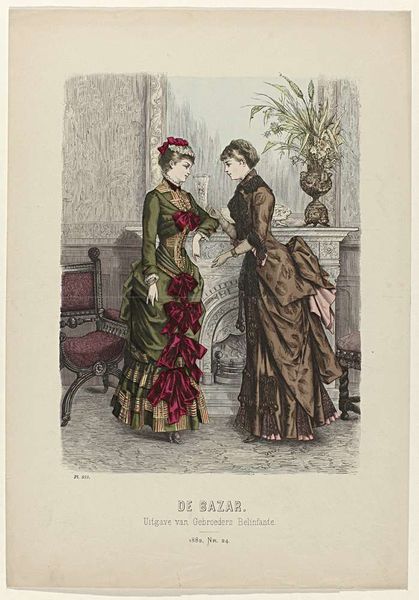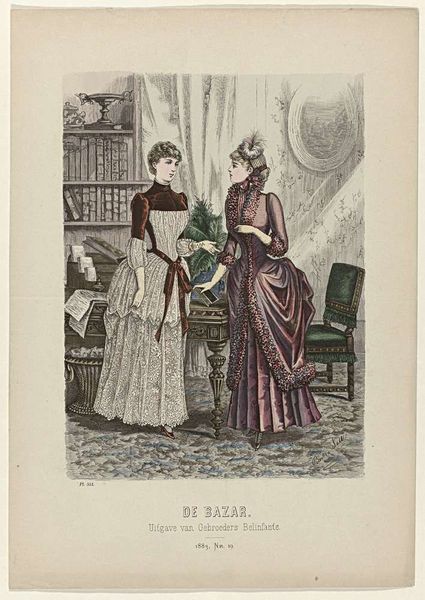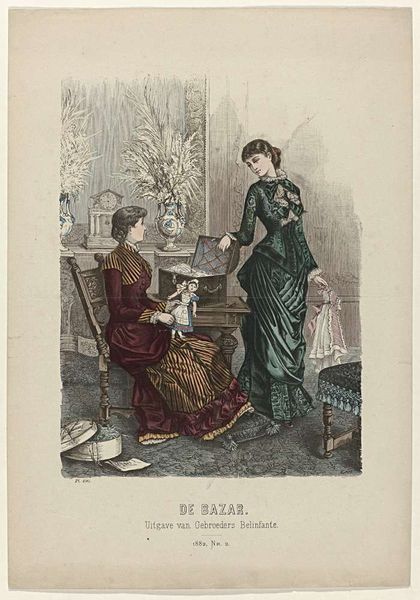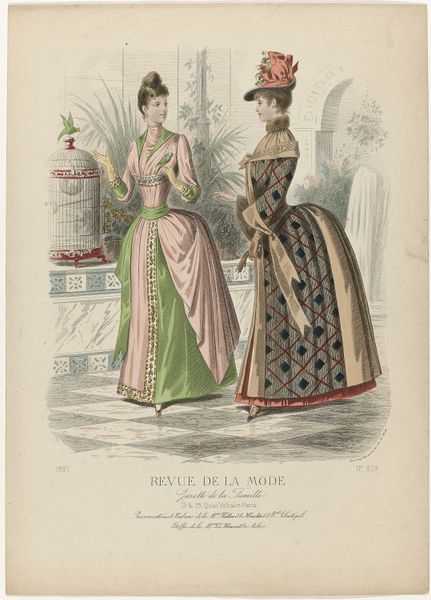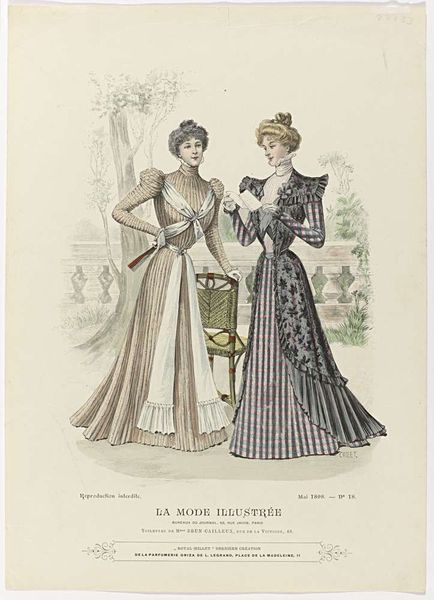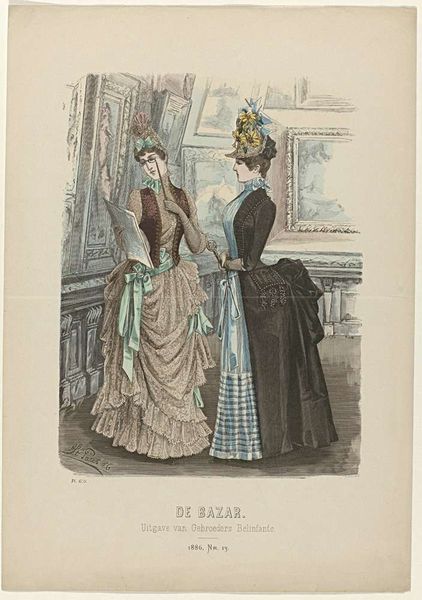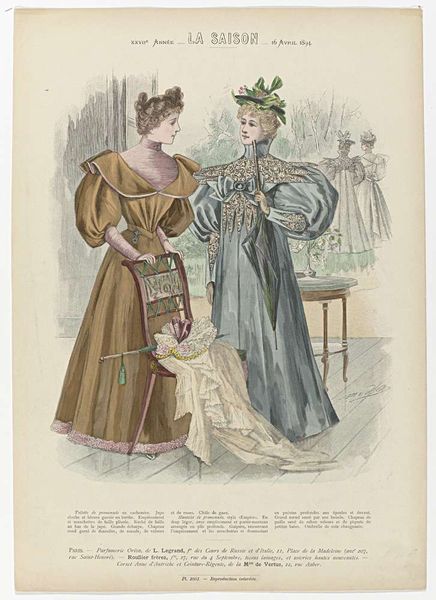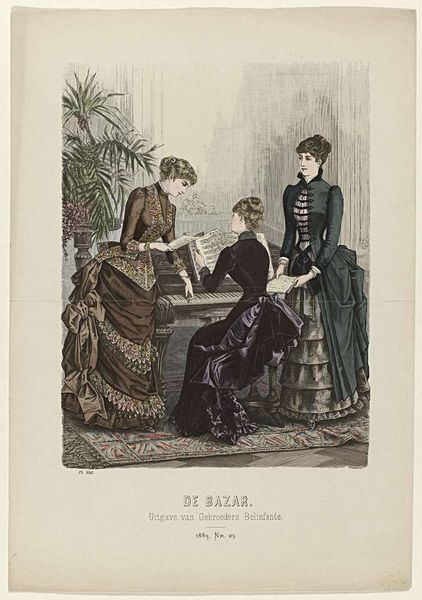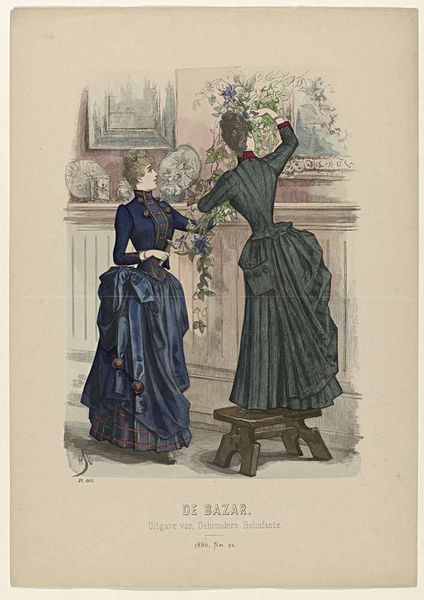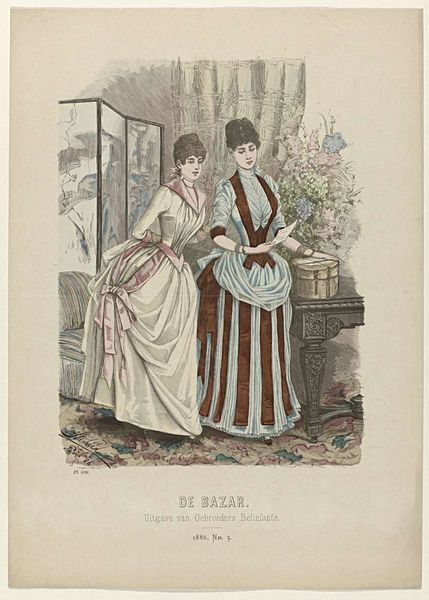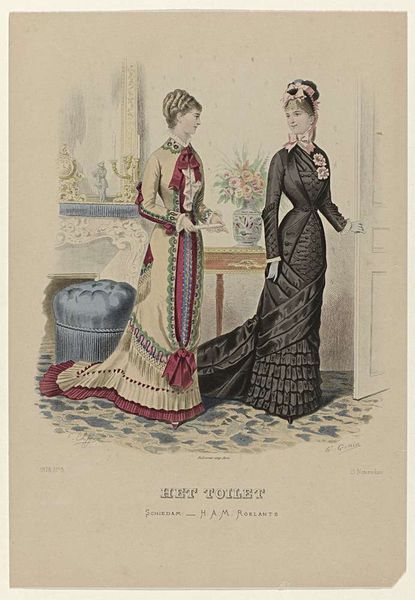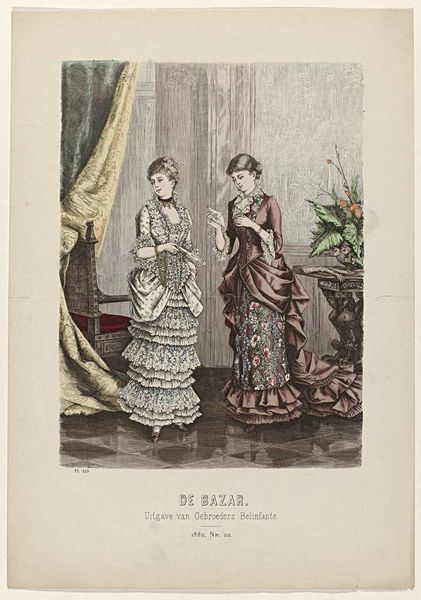
drawing, print, etching
portrait
drawing
16_19th-century
etching
watercolour illustration
genre-painting
academic-art
dress
realism
Dimensions: height 382 mm, width 270 mm
Copyright: Rijks Museum: Open Domain
This fashion plate, created anonymously in 1887, was made using a printing technique called chromolithography. This colorful medium was the peak of mass media at the time, and crucial to the rapid pace of fashion cycles, especially in a time before photography. The image’s aesthetic impact is all about the textile. From the complex arrangement of the gowns, to the lace parasol, to the hats, this plate served as a kind of advertisement of what kinds of clothing might be desired. As such, it hints at the intense labor required to produce these garments, especially the elaborate trimmings. We also see the clear relationship between bodies and clothes. These were not only for warmth and protection, but a form of social signaling. The image is tied to a much wider history of fashion consumption, but also the labor regimes that underpinned it. So, next time you see an image of clothing, think about how materials, making, and context play in our understanding of it.
Comments
No comments
Be the first to comment and join the conversation on the ultimate creative platform.
